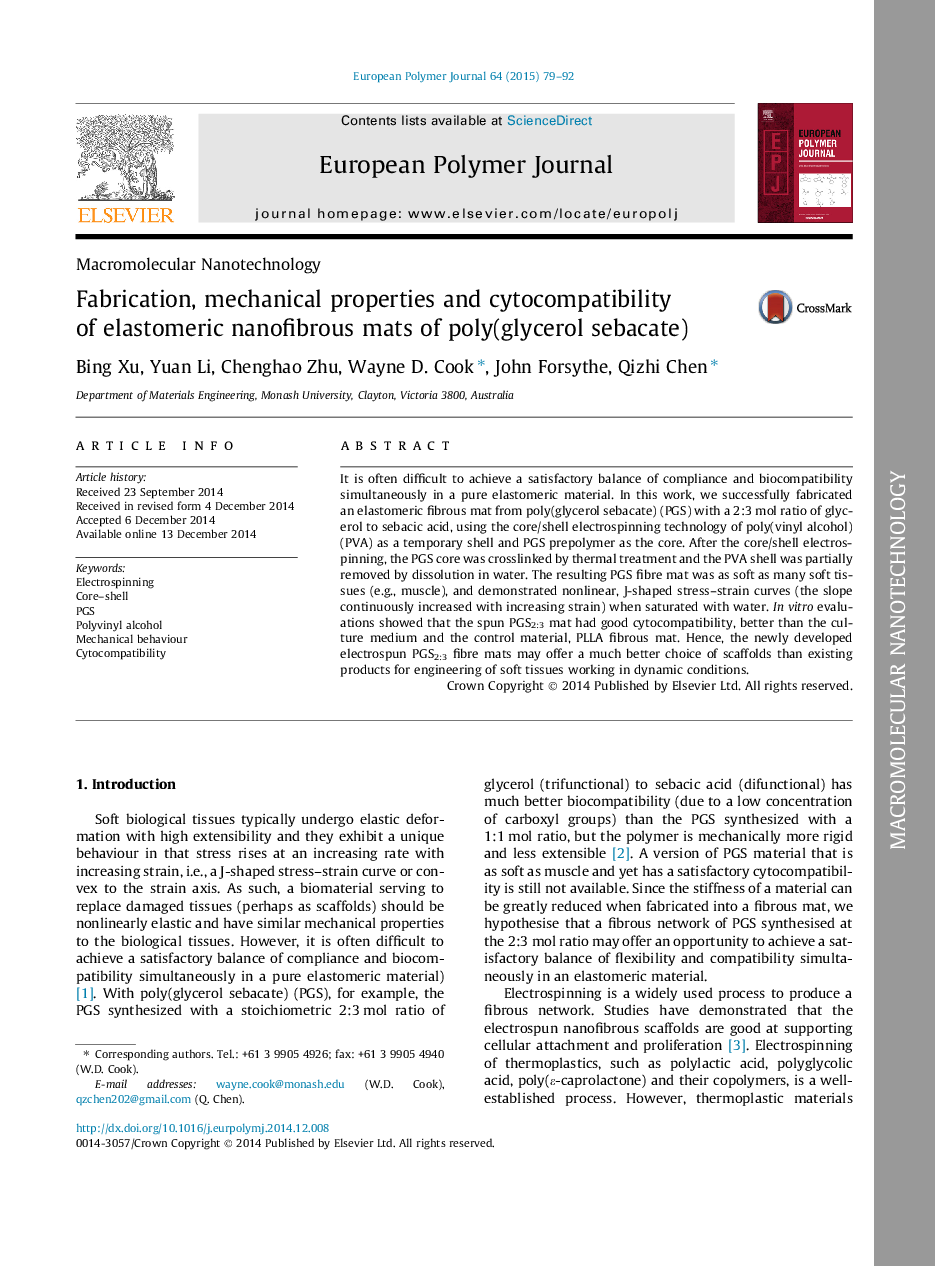| Article ID | Journal | Published Year | Pages | File Type |
|---|---|---|---|---|
| 1395262 | European Polymer Journal | 2015 | 14 Pages |
•A PGS elastomeric fibrous mat was fabricated using the core/shell electrospinning.•The PGS was thermally crosslinked and the PVA shell was partly dissolved by water.•The PGS fibre mat was soft like soft tissues and had J-shaped stress–strain curves.•In vitro evaluations showed that the spun PGS2:3 mat had good cytocompatibility.
It is often difficult to achieve a satisfactory balance of compliance and biocompatibility simultaneously in a pure elastomeric material. In this work, we successfully fabricated an elastomeric fibrous mat from poly(glycerol sebacate) (PGS) with a 2:3 mol ratio of glycerol to sebacic acid, using the core/shell electrospinning technology of poly(vinyl alcohol) (PVA) as a temporary shell and PGS prepolymer as the core. After the core/shell electrospinning, the PGS core was crosslinked by thermal treatment and the PVA shell was partially removed by dissolution in water. The resulting PGS fibre mat was as soft as many soft tissues (e.g., muscle), and demonstrated nonlinear, J-shaped stress–strain curves (the slope continuously increased with increasing strain) when saturated with water. In vitro evaluations showed that the spun PGS2:3 mat had good cytocompatibility, better than the culture medium and the control material, PLLA fibrous mat. Hence, the newly developed electrospun PGS2:3 fibre mats may offer a much better choice of scaffolds than existing products for engineering of soft tissues working in dynamic conditions.
Graphical abstractFigure optionsDownload full-size imageDownload as PowerPoint slide
